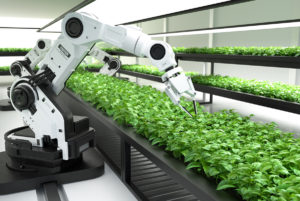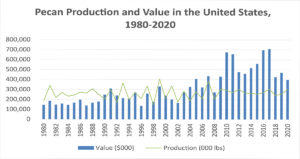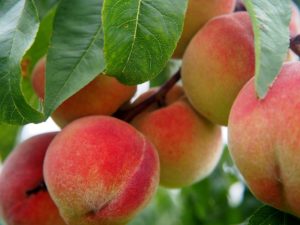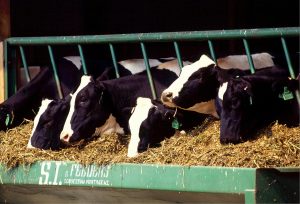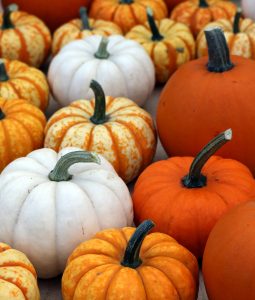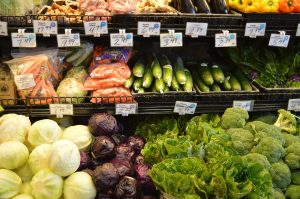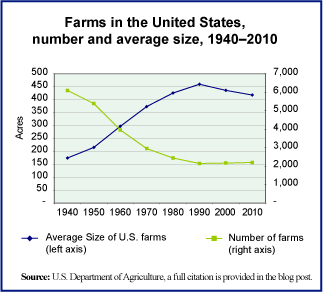Agricultural Robots
Year: 2020 and 2027
Market size: $4.56 billion and $26.68 billion, respectively
As farmworker shortages continue to worsen,1 and the pressure to produce more food for a growing global population increases, more farmers are turning to automation to operate at or near full capacity with fewer workers. Today’s market size shows the total global revenues from agricultural robot sales in 2020 and projected for 2027.
Agricultural robots can help farmers harvest crops, control weeds, and sort and pack produce. Robots can also autonomously mow, prune, seed, and thin plants. Robotic sprayers can keep workers safe as they can be operated autonomously. In addition, because robotic sprayers can be precise, up to 90% less herbicide can be used on crops. Moreover, they can be used in dairy and livestock management, automatic milking robots and sheep shearing robots being two examples. Currently, harvesting robots are the most common robots in use.
North America constitutes the largest share of the global market. This is due to high labor costs, shortage of workers, early adoption of advanced technology in agriculture, greater technological advancements, and the location of many manufacturers in the region. According to the American Farm Bureau Federation, 56% of farms in the United States use agrotechnology, with more than half citing the labor shortage as their reason for doing so. Small and medium-sized farms have suffered the most due to the labor shortage, however, some may find it difficult to invest in agricultural robots due to the high initial cost and need for training. The Asia Pacific region is expected to experience the highest revenue growth through 2027 due to technological advancements and increasing government support. In the Republic of Korea, the Intelligent Robot Development and Supply Promotion Act stated that robots are an essential component of the fourth industrial revolution. Their Basic Plan for Intelligent Robots, published in 2019, calls for systematically selecting industries for governmental and private assistance to integrate robots into business practices. In Japan, robots are a key strategy in Prime Minister Shinzō Abe’s growth policies, increasing the countries research and development budget with the goal of making Japan the world’s leading robot innovation center. Leading global manufacturers of agricultural robots include AGCO, AgJunction, Autonomous Solutions Inc., Autonomous Tractor Corp., Boumatic, Clearpath Robots, Deepfield Robots, DeLaval, GEA Group, Deere & Company, DJI, Harvest Automation John Deere, and Lely among others.
1 Labor shortages plagued the farming sector even before the COVID-19 pandemic, but they were particularly acute during 2020 as countries shut their borders to foreign tourists and workers alike to try to contain the virus.
Sources: “Agriculture Robots Market Size, Share & Trends Analysis Report by Types (Parallel Driverless, Unmanned Aerial Vehicles, Milking Robots, Automated Harvesting Systems, Others), by Application (Harvest Management, Dairy and Livestock Management, Soil Management, Irrigation Management, Field Farming, Pruning Management, Inventory Management, Others), by Farm Outlook (Fruit And Vegetable, Field Crops, Livestock, Others) Based on Region, and Segment Forecasts, 2021 – 2027,” Brand Essence Research Report Description, July 2021 available online here; Lauren Rosenblatt, “Farm Labor Shortage Nothing New, Getting Worse, Farmers Say,” AP News, July 3, 2021 available online here; “(Infographic) The U.S. Farm Labor Shortage,” AgAmerica Lending, February 26, 2020 available online here; “Robotics in Agriculture: Types and Applications,” Automate, December 12, 2017 available online here; Donovan Alexander, “9 Robots That Are Invading the Agriculture Industry,” Interesting Engineering, November 13, 2018 available online here.
Image source: user6702303, “smart-robotic-farmers-concept_17573650,” Freepik, June 15, 2021 available online here
.

